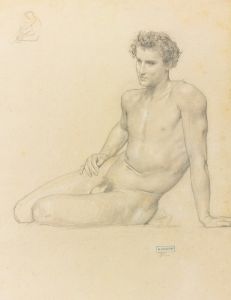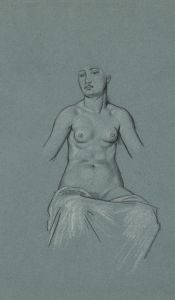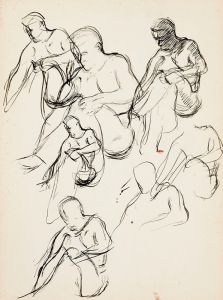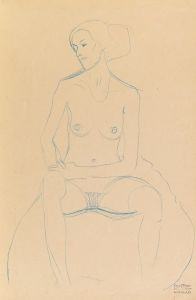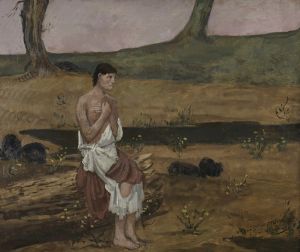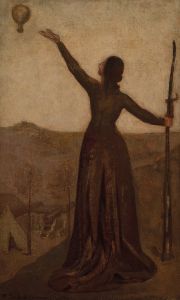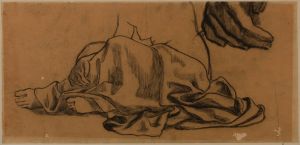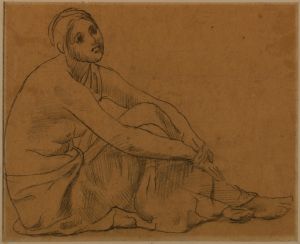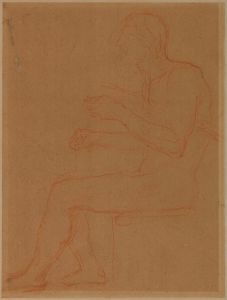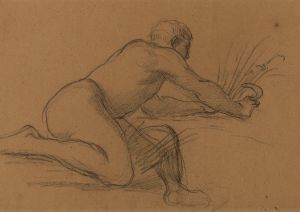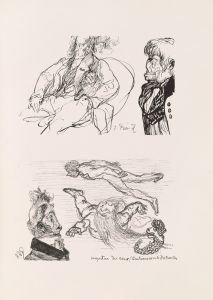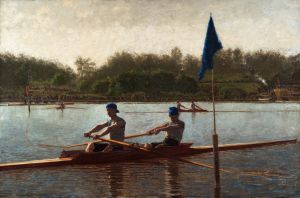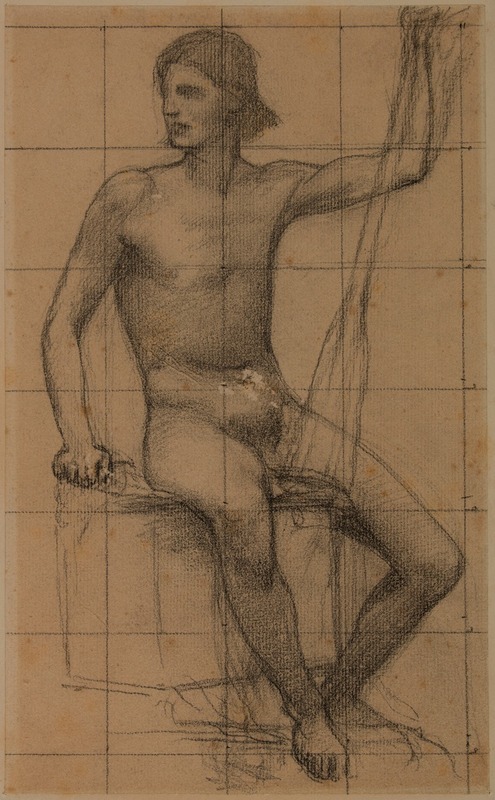
Homme assis de face tenant un aviron entre ses jambes
A hand-painted replica of Pierre Puvis de Chavannes’s masterpiece Homme assis de face tenant un aviron entre ses jambes, meticulously crafted by professional artists to capture the true essence of the original. Each piece is created with museum-quality canvas and rare mineral pigments, carefully painted by experienced artists with delicate brushstrokes and rich, layered colors to perfectly recreate the texture of the original artwork. Unlike machine-printed reproductions, this hand-painted version brings the painting to life, infused with the artist’s emotions and skill in every stroke. Whether for personal collection or home decoration, it instantly elevates the artistic atmosphere of any space.
Pierre Puvis de Chavannes (1824–1898) was a prominent French painter known for his large-scale murals and allegorical works. His art is often associated with the Symbolist movement, and he is celebrated for his unique style that emphasizes simplicity, harmony, and a muted color palette. Among his lesser-known works is Homme assis de face tenant un aviron entre ses jambes (translated as Seated Man Facing Forward Holding an Oar Between His Legs), which reflects Puvis de Chavannes' interest in depicting human figures in contemplative or symbolic poses.
This artwork is a study or preparatory piece, likely created as part of Puvis de Chavannes' process for a larger composition or mural. The seated man, holding an oar, is depicted in a frontal pose, with a calm and introspective demeanor. The simplicity of the figure and the lack of elaborate background details are characteristic of Puvis de Chavannes' approach to art, which often sought to strip away unnecessary elements to focus on the essence of the subject. The oar held by the figure may suggest a connection to themes of labor, travel, or human interaction with nature, though the exact context of the work is not definitively documented.
The medium of the piece is likely a drawing or sketch, as Puvis de Chavannes often created numerous preparatory studies for his larger works. These studies allowed him to experiment with composition, anatomy, and the placement of figures before committing to the final mural or painting. The restrained and deliberate style of this work aligns with his broader artistic philosophy, which prioritized clarity and timelessness over intricate detail.
While Homme assis de face tenant un aviron entre ses jambes is not as widely recognized as Puvis de Chavannes' monumental murals, it provides insight into his creative process and his ability to convey emotion and meaning through simplicity. The work exemplifies his skill in rendering the human form with a sense of dignity and introspection, qualities that have made his art influential to later generations of artists.
Further details about the specific context or purpose of this piece are not well-documented, and it remains one of the many studies that highlight Puvis de Chavannes' dedication to his craft.





